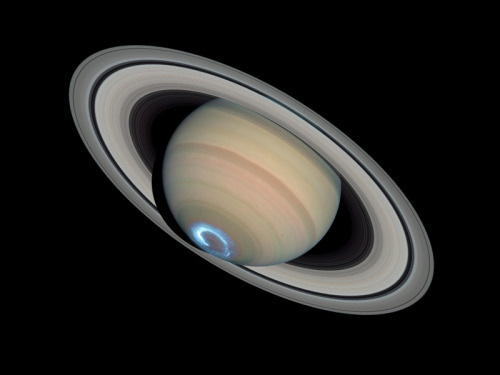:)

:)
More Posts from Sidusglacies and Others


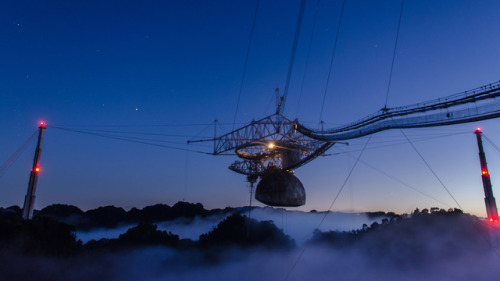
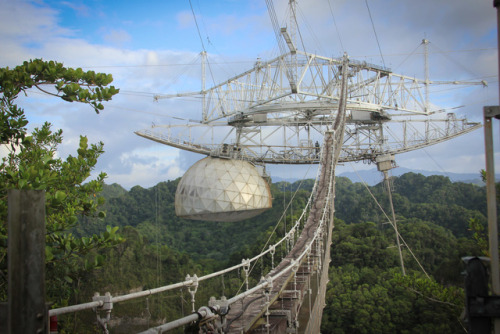

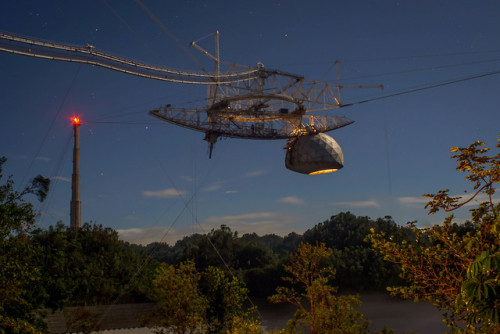
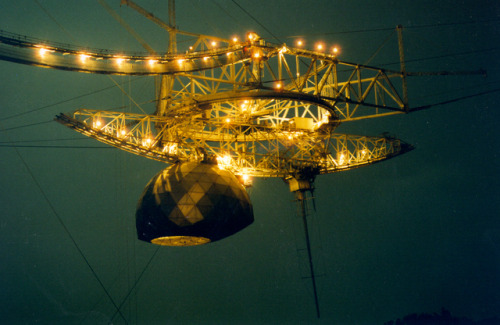
Arecibo Observatory
The Arecibo Observatory is a radio telescope in the municipality of Arecibo, Puerto Rico. This observatory is operated by University of Central Florida, Yang Enterprises and UMET, under cooperative agreement with the US National Science Foundation (NSF). The observatory is the sole facility of the National Astronomy and Ionosphere Center (NAIC), which is the formal name of the observatory. From its construction in the 1960s until 2011, the observatory was managed by Cornell University.
For more than 50 years, from its completion in 1963 until July 2016 when the Five hundred meter Aperture Spherical Telescope (FAST) in China was completed, the Arecibo Observatory’s 1,000-foot (305-meter) radio telescope was the world’s largest single-aperture telescope. It is used in three major areas of research: radio astronomy, atmospheric science, and radar astronomy.
Many scientific discoveries have been made with the observatory. On April 7, 1964, soon after it began operating, Gordon Pettengill’s team used it to determine that the rotation period of Mercury was not 88 days, as formerly thought, but only 59 days. In 1968, the discovery of the periodicity of the Crab Pulsar (33 milliseconds) by Lovelace and others provided the first solid evidence that neutron stars exist. (Crab pulsar sound by Arecibo Observatory)

In 1974, Hulse and Taylor discovered the first binary pulsar PSR B1913+16, an accomplishment for which they later received the Nobel Prize in Physics. In 1982, the first millisecond pulsar, PSR B1937+21, was discovered by Donald C. Backer, Shrinivas Kulkarni, Carl Heiles, Michael Davis, and Miller Goss. This object spins 642 times per second and, until the discovery of PSR J1748-2446ad in 2005, was identified as the fastest-spinning pulsar.
The Arecibo Message

In 1974, the Arecibo Message, an attempt to communicate with potential extraterrestrial life, was transmitted from the radio telescope toward the globular cluster Messier 13, about 25,000 light-years away. The 1,679 bit pattern of 1s and 0s defined a 23 by 73 pixel bitmap image that included numbers, stick figures, chemical formulas and a crude image of the telescope. source
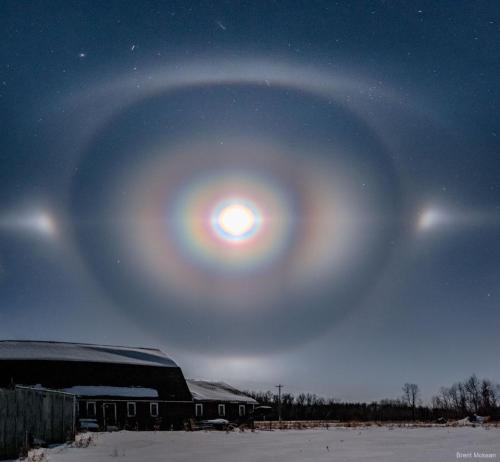
“Moon Corona, Halo, and Arcs over Manitoba” by Brent Mckean



Mammatus clouds are a relatively rare and dramatic variety. (Image and video credit: M. Olbinski)


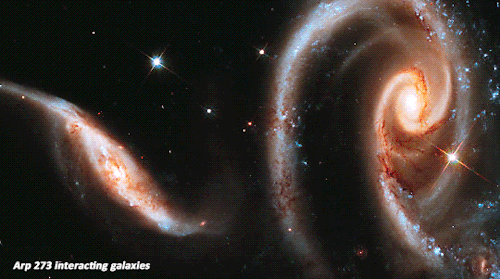




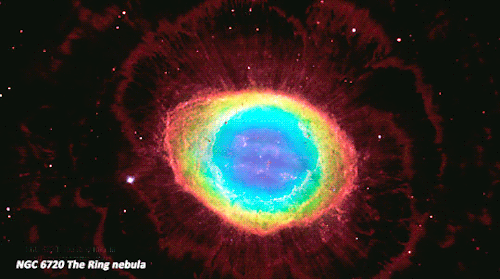


The Best of Hubble_1




video stills april 2020

Planetary Satellites (1977)

i’m doing a short Photoshop class because i’m apparently not smart/millennial enough to teach myself so here’s a practice deer, messing around with selection tools and photo-editing with minor, minor doodling
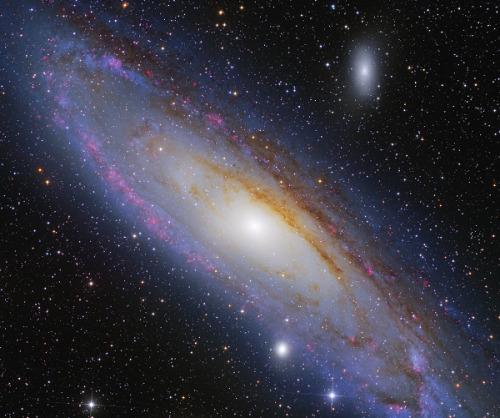




The future in space, painted by Ron Miller.
-
 fiddledickers reblogged this · 6 months ago
fiddledickers reblogged this · 6 months ago -
 consultingjedi liked this · 6 months ago
consultingjedi liked this · 6 months ago -
 icedragon19 reblogged this · 6 months ago
icedragon19 reblogged this · 6 months ago -
 icedragon19 liked this · 6 months ago
icedragon19 liked this · 6 months ago -
 annalgyrg liked this · 6 months ago
annalgyrg liked this · 6 months ago -
 beewulf liked this · 6 months ago
beewulf liked this · 6 months ago -
 voidlingcryptid reblogged this · 6 months ago
voidlingcryptid reblogged this · 6 months ago -
 fiddledickers liked this · 6 months ago
fiddledickers liked this · 6 months ago -
 magical-octopus liked this · 6 months ago
magical-octopus liked this · 6 months ago -
 trashbee liked this · 6 months ago
trashbee liked this · 6 months ago -
 k1ngy33n liked this · 6 months ago
k1ngy33n liked this · 6 months ago -
 weirdalfangurl92 liked this · 6 months ago
weirdalfangurl92 liked this · 6 months ago -
 raiasintended liked this · 6 months ago
raiasintended liked this · 6 months ago -
 vulturebeetlesnake liked this · 6 months ago
vulturebeetlesnake liked this · 6 months ago -
 silanb liked this · 6 months ago
silanb liked this · 6 months ago -
 finnthemann liked this · 6 months ago
finnthemann liked this · 6 months ago -
 gglitchshit liked this · 6 months ago
gglitchshit liked this · 6 months ago -
 virtuouspagan420 reblogged this · 6 months ago
virtuouspagan420 reblogged this · 6 months ago -
 sn0zzzz liked this · 6 months ago
sn0zzzz liked this · 6 months ago -
 supernoob248 liked this · 6 months ago
supernoob248 liked this · 6 months ago -
 gamer-shrimp-buoy reblogged this · 6 months ago
gamer-shrimp-buoy reblogged this · 6 months ago -
 autisticmiqote liked this · 6 months ago
autisticmiqote liked this · 6 months ago -
 alexstrasza reblogged this · 6 months ago
alexstrasza reblogged this · 6 months ago -
 greendolphinprison reblogged this · 6 months ago
greendolphinprison reblogged this · 6 months ago -
 d3nihilist liked this · 6 months ago
d3nihilist liked this · 6 months ago -
 freckleslikestars liked this · 6 months ago
freckleslikestars liked this · 6 months ago -
 tryfingersbuthole reblogged this · 6 months ago
tryfingersbuthole reblogged this · 6 months ago -
 tryfingersbuthole liked this · 6 months ago
tryfingersbuthole liked this · 6 months ago -
 theseeliecourt reblogged this · 6 months ago
theseeliecourt reblogged this · 6 months ago -
 faileddog liked this · 6 months ago
faileddog liked this · 6 months ago -
 adelaidagreenflower liked this · 6 months ago
adelaidagreenflower liked this · 6 months ago -
 wizardsisananimal liked this · 6 months ago
wizardsisananimal liked this · 6 months ago -
 the-radio-host reblogged this · 6 months ago
the-radio-host reblogged this · 6 months ago -
 transurfingers reblogged this · 6 months ago
transurfingers reblogged this · 6 months ago -
 mightylittleman liked this · 6 months ago
mightylittleman liked this · 6 months ago -
 andaisq reblogged this · 6 months ago
andaisq reblogged this · 6 months ago -
 unifel reblogged this · 6 months ago
unifel reblogged this · 6 months ago -
 grink liked this · 6 months ago
grink liked this · 6 months ago -
 ace-planecrasher reblogged this · 6 months ago
ace-planecrasher reblogged this · 6 months ago -
 onehalfoftheset reblogged this · 6 months ago
onehalfoftheset reblogged this · 6 months ago -
 tubapun reblogged this · 6 months ago
tubapun reblogged this · 6 months ago -
 monkeysky liked this · 6 months ago
monkeysky liked this · 6 months ago -
 disgruntleddemon reblogged this · 6 months ago
disgruntleddemon reblogged this · 6 months ago -
 disgruntleddemon liked this · 6 months ago
disgruntleddemon liked this · 6 months ago -
 crownedinmarigolds liked this · 6 months ago
crownedinmarigolds liked this · 6 months ago -
 wolfram-afternoons liked this · 6 months ago
wolfram-afternoons liked this · 6 months ago -
 problemsynth reblogged this · 6 months ago
problemsynth reblogged this · 6 months ago -
 call-me-copycat liked this · 6 months ago
call-me-copycat liked this · 6 months ago -
 coffin-dwelling-tramp reblogged this · 6 months ago
coffin-dwelling-tramp reblogged this · 6 months ago
